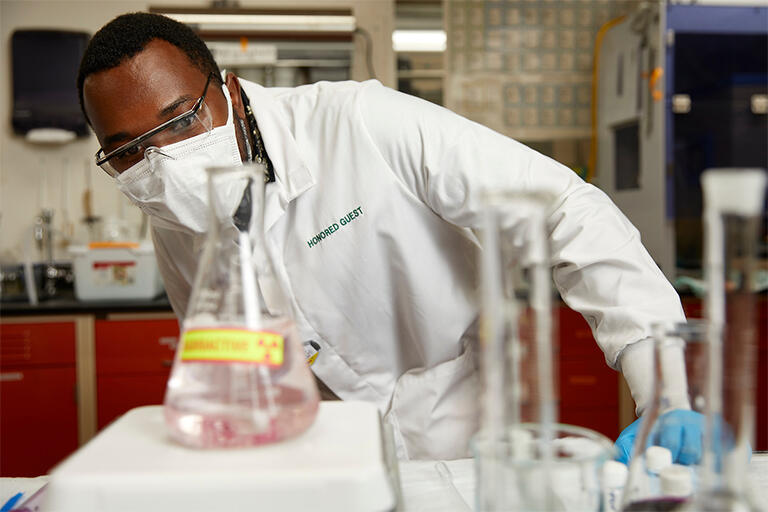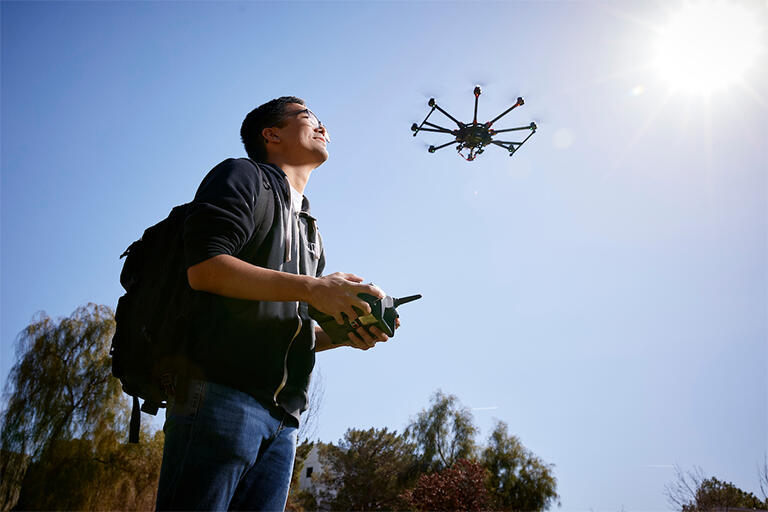The NSSTC seeks to provide students with practical experience and training through applicable research projects and experiential learning. The current research addresses over-arching themes within a topical research area of nuclear security. The research focus of the NSSTC project teams can be summarized into four distinct sub-topic areas:
Radiation Detection Systems for Nuclear Security Applications
- GaN materials and devices for radiation detection (Lead: Prof. K. Sun): the objective is to develop radiation-hardened GaN detectors;
- Muon detectors (Lead: Prof. K. Sun): the objective is to develop muon imaging detectors;
- Perovskite detectors (Lead: Prof. A. Barzilov): the objective is to develop ambient temperature, high-resolution gamma-ray detectors;
- Assay of radiological materials using multi-mode, multi-energy detectors (Lead: Prof. A. Barzilov): the objective is to study nuclear security applications of gamma/neutron elpasolite scintillators.


Nuclear Forensics
(Lead: Prof. A. Gelis)
The objective of the Nuclear Forensics team is to develop a device for rapid in-situ detection of Pu, U, Am and radionuclides. The proposed device will enable nuclear forensic analysis in the field offering in-situ characterization of plutonium in reprocessing operations; monitoring of actinides in the civilian nuclear fuel cycle; the detection of the diversion of dirty-bomb post-event analysis; improved sample utilization; and, statistical improvement in detection level.
X-ray Fluorescence for Radionuclide and Actinide Detection
(Lead: Prof. M. Schlossman)
Under the direction of Prof. Schlossman, students are trained in the application of X-ray fluorescence (XRF) to the characterization of radionuclides buried deep within materials. XRF provides a unique signature for elemental identification; it can be used to quantify the amount of specific elements in a material, including radionuclides of relevance to nuclear security. Students educated in this area will be well suited to address the nuclear security challenges of the future that DOE/NNSA faces. UIC contributes to building a workforce with the technical knowledge to contribute directly to the NNSA mission.


Remote Sensing of Radiological and Nuclear Materials
(Lead: Prof. W. Yim)
The objective of this project is to develop a novel paradigm of modeling, software architecture, sensor network, and methods of robotics-based remote radiation sensing and source search in clustered environments to enable a minimum number of human operators to manage the radiation area search, including at nuclear facilities. To provide flexibility of detecting radiation and visually observing a target environment from different angles, the unmanned aerial and ground vehicle (UGV-UAV) team-based approach is used over individual autonomous vehicles alone for improved inspection capability of infrastructure and search tasks.
Summer Programs
Faculty and students in consortium member universities are actively engaged with scientists at the Nevada National Security Sites (NNSS), Argonne National Laboratory (ANL) and Los Alamos National Laboratory (LANL) as well as the Center for Integrated Nanotechnologies (CINT) where they receive practical experience and training. The scientist-to-scientist interaction affords NSSTC students with invaluable opportunities to broaden their research interests and deepen their understanding of topics in the area of nuclear security.
The NSSTC students participate in summer programs across the partner institutions in support of the consortium goals. Student participation is fully supported by the NSSTC.